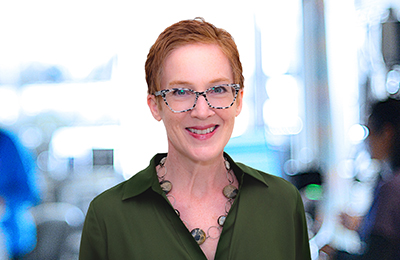Finding the story in the study

Researchers at the Centre for Education Research & Innovation are on a mission to help health researchers write about science in a more intriguing way. And to even have some fun while doing it.
By Crystal Mackay, MA’05
Lorelei Lingard, PhD, says she dreams of the day that she finds herself up past midnight with the bedside lamp on, so engrossed in reading a research paper that she can’t put it down.
“It hasn’t happened yet,” she said with a laugh.
The idea that science writing can, and should be, compelling, is the energy behind a new book, Story Not Study, that Lingard co-authored with Dr. Chris Watling, fellow scientist at the Centre for Education Research & Innovation at Schulich Medicine & Dentistry.
“At the most basic level it’s the idea that no one will connect with your research unless you can tell a story from the study that has an impact on a problem that people care about,” explained Lingard, who has an educational background in rhetoric and language.
 The pair has been teaching health researchers about writing for more than a decade through seminars, multi-day writing retreats and publications. They have gained an international reputation as leaders in education research and academic writing, and are often asked to present as visiting lecturers on the topic around the globe.
The pair has been teaching health researchers about writing for more than a decade through seminars, multi-day writing retreats and publications. They have gained an international reputation as leaders in education research and academic writing, and are often asked to present as visiting lecturers on the topic around the globe.
They acknowledge that writing is a researcher’s most powerful currency in academia, and are working to make writing something that researchers are excited to learn and talk about with their peers.
“We want to provide the language to start the conversation about writing and have research communities make it a part of how they support each other,” said Watling. “The last thing you want is for good science to be undermined by mediocre writing so that no one pays attention to it.”
Putting more focus on academic writing may be a way to address what the pair says is a well-recognized knowledge translation crisis in health research. The research is out there, but it isn’t being taken up or acted on in a meaningful way.
“The pandemic has really put the spotlight on the need to communicate in a way that not only your very small specialized scientific community might understand, but those in the general population will as well. We’ve had a front row seat to some real challenges related to that,” said Lingard.
She stresses that having the tools to write in a way that resonates with readers, and helps them understand how the research fits into a bigger problem or a broader context, may help to solve some of these challenges.
“As researchers, to be able to reach out more broadly we have to drop some of our assumptions about the language that we need to use and the way we need to express ourselves,” said Watling. “You don’t need to write in a way that is opaque and impenetrable for people to believe you are a real scientist who knows what you’re talking about.”
Simple, elegant and persuasive writing does far more to enhance the work, he says. That is often a difficult leap for scientists to make when they haven’t ever been formally taught how to write this way. They learn the skills and knowledge to conduct sound and ethical research, but not how to translate that to the page.
“That leaves many researchers dreading writing,” said Lingard. “They know they have to do it, but they don’t necessarily have a tool box like they have for their research. They just have a blank screen and they are supposed to fill it.”
The pair hopes their book will provide some of these tools for health researchers and have packed it with refreshers on key grammar issues, strategies for writing each section of a research paper and practical advice on how to write collaboratively.
They also hope the book can help researchers find some joy in writing.
“Writing is difficult even for the most experienced writer, but I think that people can start to draw some joy out of a clearly expressed idea, or a little piece of power in their wording that gets something across and resonates,” said Watling. “I do think there are moments of joy to be found in the process.”








